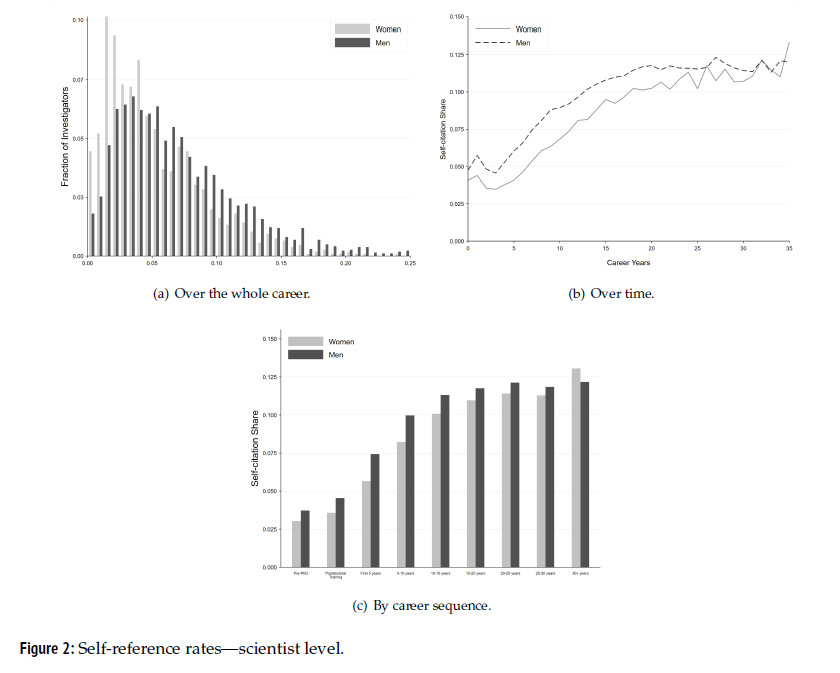Self-citation, cumulative advantage, and gender inequality in science
Author: Pierre Azoulay
Author: Freda B. Lynn
Abstract: In science, self-citation is often interpreted as an act of self-promotion that (artificially) boosts the visibility of one’s prior work in the short term, which could then inflate professional authority in the long term. Recently, in light of research on the gender gap in self-promotion, two large-scale studies of publications examine if women self-cite less than men. But they arrive at conflicting conclusions; one concludes yes whereas the other, no. We join the debate with an original study of 36 cohorts of life scientists (1970–2005) followed through 2015 (or death or retirement). We track not only the rate of self-citation per unit of past productivity but also the likelihood of self-citing intellectually distant material and the rate of return on self-citations with respect to a host of major career outcomes, including grants, future citations, and job changes. With comprehensive, longitudinal data, we find no evidence whatsoever of a gender gap in self-citation practices or returns. Men may very well be more aggressive self-promoters than women, but this dynamic does not manifest in our sample with respect to self-citation practices. Implications of our null findings are discussed, particularly with respect to gender inequality in scientific careers more broadly.
Date: 2020
Volume: 7
Pages: 152–186
Publication: Sociological Science
Date Added: 11/9/2021, 11:41:09 AM
Reading Notes:
Objective: To measure the existence of a gender gap in self-citations and the rate of return in self-citation by gender
Importance: Two recent studies on this topic came to conflicting conclusions. This study is aimed at being more comprehensive, with 36 cohorts of life scientists
Background: ~9% of all citations are self-citations, with higher percentages in some fields (physical sciences) than others (humanities). Multi-authored papers have more self-citations.
King et al (2017) find self-citation is 70% higher for men than women, using papers in JSTOR, but they do not control for # of papers or career age.
Mishra et al (2018) control for # of papers and find no self-citation gender gap in PubMed papers
Data & Key Variables:
Longitudinal study of the winners of postdoctoral fellowships - total of 3,667 life scientists, "star" graduate students
Publications, references, citations, NIH grants, & patents
Exits from science, exits from academia, exits from "stable" to "marginal" position within academia
Methodology:
Prob(self-cite)=B0+B1*Woman+B2*Relatedness Indcator+B3*Total Pubs & Pub Characteristics+B4*"Predetermined Covariates"
Outcome=B0+B1*Woman+B2*Total Pubs+B3*Total Pubs*Woman+B4 Frac Self-Cite+B5*Frac Self-Cite*Women
Hazard model for exits
Results: There is a gender gap in publications, which accounts for the disaggregate discrepancy in self-citation.
If stock of previous publications to potentially self-cite from is controlled for, the gender gap in self-citation disappears
Self-citation does not appear to be associated with positive career outcomes. It is neutral or even negative (controlling for # of publications)
Comments: External validity? Looking at biology students who were fellowship winners (top of their programs)
Key Table/Figure:

